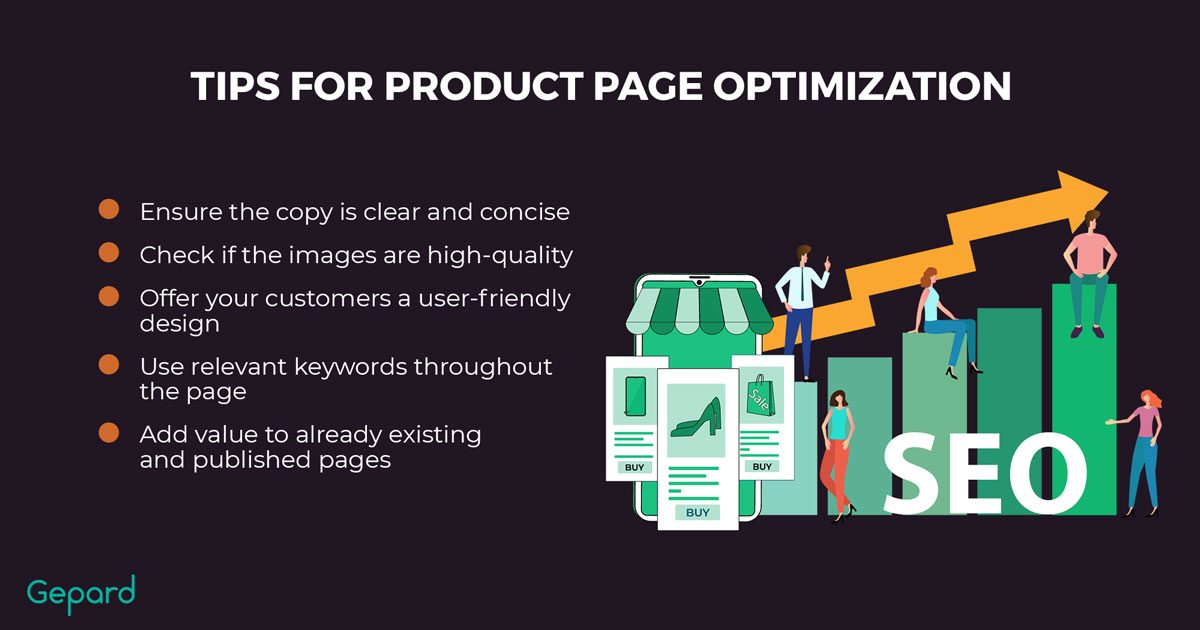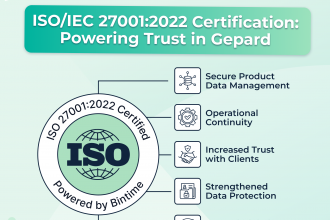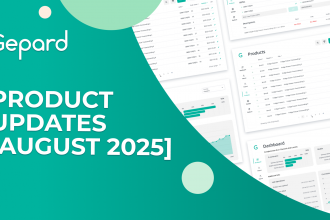Expert Interview: Maximize The Value Of Your PIM Asset For eCommerce Website SEO
With the ever-growing spending on online shopping and the rise of eCommerce, building a solid SEO strategy for your product content becomes one of the most fundamental tasks for businesses. Not to mention the technical part of search engine optimization!
Dan Taylor, an award-winning SEO specialist, and digital marketing strategist shares with Gepard’s business blog readers his practical knowledge about product content SEO and the role of Product Information Management solutions for it.
- Head of R&D, and Technical SEO at SALT.agency;
- Winner of the 2018 TechSEO Boost Innovation award’
- Specializes in helping grow enterprise eCommerce retailers and SaaS companies;
- Worked with start-ups and SaaS companies with Series A to Series E funding, private investment, accelerator funds, listed IPOs, and companies from the Inc 5000 & Fortune 100;
- VIP contributor at SEJ – Search Engine Journal.
It seems, there’s no need to talk about its importance and dive into details since everybody knows SEO is an inevitable part of each eCommerce business. Nope! We’ve got some questions that not every business covers!
How to boost your eCommerce website performance and enhance your sales and shopping experience with the help of search engine optimization? Can the PIM solution help a retailer or brand improve its product descriptions?
Read on!
Interviewer:
Hey Dan! Thank you for taking some time off from your busy schedule to answer a few questions about SEO for product data in eCommerce.
Interviewer:
Many eCommerce business owners might think that SEO is something that is not for their stores, they just can move on without it and gain profit. And obviously, the situation is exactly the opposite. Let’s talk about how important is SEO for product content? (if it is, of course)
Dan Taylor:
An optimized product page is essential for any eCommerce business. It can help drive traffic and conversions by making it easier for customers to find your products.
In order to optimize your product pages, you’ll need to ensure that the copy is clear and concise, the images are high-quality, and the overall design is user-friendly. Additionally, you should use relevant keywords throughout the page to help improve your chances of ranking in the search engines.
Another key factor to consider is that of value proposition, especially if you’re selling products manufactured by other companies and using flavor text and information that is commonly published and available across the internet – so you need to work out how you can add value to these pages to give Google reasoning to index them.

Interviewer:
It’s a common fact that duplicate content is something to avoid. Google defines it as ‘substantive blocks of content within or across domains that either completely matches other content in the same language or are appreciably similar. But what if a retailer or brand doesn’t have any choice and has to use product data provided by CSPs (Content Service Providers)? Does it affect SEO rankings if a retailer uses product descriptions from content providers?
Dan Taylor:
The first thing I want to highlight is that there is no “duplicate content” penalty.
Using manufacturer descriptions or non-unique content as the main value proposition on your product pages can have an impact on both performance and rankings, especially if your competitors are using the same content.
Google has no obligation to rank, or even index your product pages if they offer no additional value proposition to your competitors – so you need to look to add to these pages and improve the proposition to make sure rankings (and indexing) aren’t affected.
Some of these amends can be driven through automation, and your PIM, which sidesteps into the next question about utilizing the PIM.
Read more about choosing a content provider:
Interviewer:
Thanks for the good news, Dan! So, duplicate content is not a problem for eCommerce sites. The next concern for most enterprise-level eCommerce businesses is automating everything, including SEO. Is it possible to automate any SEO processes for product data with a PIM solution, and how?
Dan Taylor:
Nine out of ten eCommerce websites that approach me are underutilizing their PIM, and the data within can translate into the value proposition and additional content elements on the product page.
These changes don’t necessarily have to be major, but even small things like including additional information in the product page title tag, H1 (which presumably will be the product title), dynamic elements in the description… They can all be done dynamically on most CMSs and add additional value elements for Google to see the differentiation between your listing of X Brand Shoes, and your competitor’s listings of the same shoes.
Interviewer:
So, you’re telling that the PIM solution is often underutilized in terms of SEO. And maybe it’s not the only value that a PIM tool can bring to an eCommerce business. What’s your opinion – can PIM solution’s taxonomy help in cross-selling and up-selling products? How?
Dan Taylor:
Utilizing the PIM for creating up-selling and cross-selling opportunities is something that can be baked into a template with ease – and if you use custom tagging within your PIM, you can steer customers towards similar products by different variables (e.g. size, color, shape, release event).
These PIM integrations with the product pages can also help prevent negative user experiences. If the user lands on a product that is out of stock, the product template can be made to be dynamic to promote similar products (based on PIM taxonomy) to prevent a negative user experience, soft-404, or what Microsoft Clarity calls a “quick buck”.

Interviewer:
Seems, it’s easy to cross- and up-sell with the PIM software! Let’s wrap it up with the last question. Dan, what’s your top advice for manufacturers and brands about SEO for their product content?
Dan Taylor:
For the majority of products, looking to utilize PIM data to add value for the user should be a standard practice in optimizing your eCommerce store and can help create some differentiation between your product page and competitors – especially if there are heavy similarities in the product description and value proposition.
For important products in your portfolio, you should also look to add additional content to those pages – whether it be a “pro tip” or a featured review and story (in addition to the standard reviews widgets). This again helps create additional value propositions and differentiation.
Interviewer:
Thank you for the interview, Dan! We’ve got a bunch of valuable insights today, and we hope we’ll reconnect in the nearest future to discuss even more topics!







